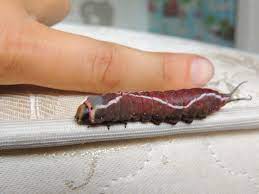 |
| Puss Caterpillar And Trumpapillar, Like A Wig That Can Walk But Can't Touch Source (wiki & Flickr) |
Puss Caterpillar And Trumpapillar, Like A Wig That Can Walk But Can't Touch. Puss Caterpillar is the name of a type of caterpillar that looks different from most caterpillars. The reason is, Puss Caterpillar has very thick and long hair.
The body of the caterpillar is so thick that it is not visible, while its fur looks like a human wig. And because its fur also looks like thick cat fur, this caterpillar is also given the name caterpillar puss.
Puss Caterpillar, Like A Wig That Can Walk But Can't Touch
The original Puss Caterpillar is the larval phase of the southern flannel moth or in scientific language it is called Megalopyge opercularis. The name flannel is given because the adult moth has a body covered with thick, colorful fur like a flannel.
While the southern name is given because in the United States, this moth is found in the southern region of the US. Apart from the name southern flannel moth, this moth is also known as the puss moth.
 |
| Puss Caterpillar And Trumpapillar, Like A Wig That Can Walk But Can't Touch |
The Puss Caterpillar habitat is not only in the US. They can also be found in the Amazon Forest, South America. Puss Caterpillars have a variety of coat colors. Gray, white, red, yellow, and orange cat caterpillars have all been found.
The orange Puss Caterpillar is even nicknamed Trumpapillar a combination of the words Trump and caterpillar because the cat caterpillar resembles Donald Trump's hair.
Despite their cute and adorable appearance, the Puss Caterpillar is not an animal to touch. The reason is, the Puss Caterpillar is one of the most poisonous types of caterpillars in the world.
If this caterpillar is touched by a human, then the person concerned will immediately feel a burning sensation on the skin. For certain people who are allergic to this caterpillar poison, they will also experience dizziness, fever, seizures, and stomach pain.
 |
| Puss Caterpillar And Trumpapillar, Like A Wig That Can Walk But Can't Touch |
Another thing that is puzzling about this caterpillar is that when its fur hits human skin, the fur can also be pulled out and stuck to the skin. If the hairs stuck to the skin are not removed immediately, they will continue to inject venom into the victim's skin.
When the victim is no longer exposed to Puss Caterpillar hair, the caterpillar sting will leave a reddish rash that won't heal until five days later.
Due to the same poison, the Puss Caterpillar is also known as asp in the US state of Texas. Asp or aspis is a name usually used by English speakers to describe a venomous snake.
In the US, the peak population of Puss Caterpillars occurs in June, July and October. It is not uncommon for people to get poisoned by caterpillars because there are caterpillars that fall out in the wind, or because they are exposed to caterpillars that have fallen from trees.
Puss Caterpillar Videos
If there are too many Puss Caterpillars that appear in a location, then the public places in that location must be temporarily closed until the caterpillar population decreases.
This happened in Texas in 1924. Because of the large number of caterpillars that appeared that year, the local state government was forced to close a number of schools.
About the Life Cycle And Natural Enemies
 |
| Puss Caterpillar And Trumpapillar, Like A Wig That Can Walk But Can't Touch (source) |











0 comments